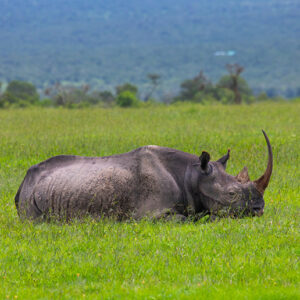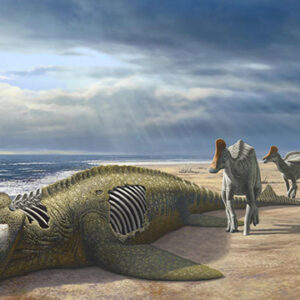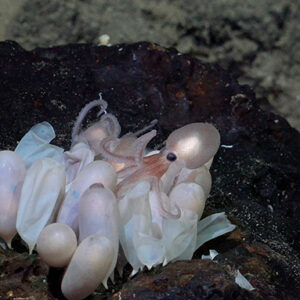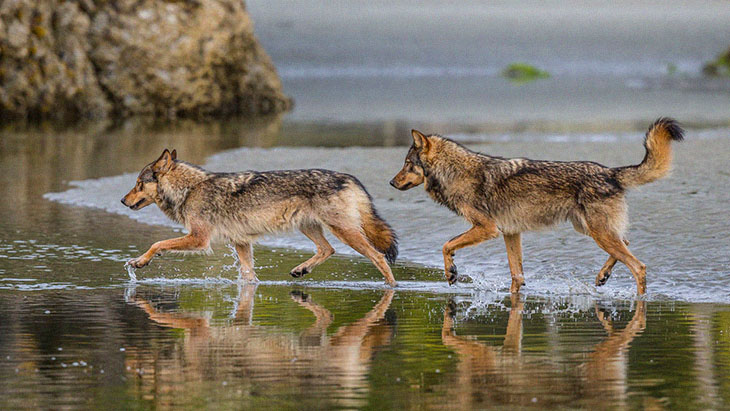
The flora and fauna that has so far been documented on this earth is truly amazing. What started as miniscule single-celled organisms that over millennia have transformed into the plants and animals today, biologists have estimated these evolved organisms to be over 8.7 million species today.
An approximation of 1 million species are discovered every year, and there is a big possibility that millions more have yet to be discovered. With Mother Nature’s perfect creations, each specie can evolve and thrive to contribute to the wellbeing of the whole earth – completing the circle of life with a massive diversity of different species that astounds the human mind.
An unfortunate part of mother nature is the evolution of homo sapiens which is the main culprit of the continuous extinction of many other species, while putting others at risk by destroying natural habitats by way of hunting, fishing and pollution.
Another animal under threat are these sea wolves that have learned to keep themselves hidden. Living along the Pacific coast of British Columbia in an isolated 21 million acre land, these sea wolves are different from the wolves we know of who live and hunt in diverse habitats that include woodlands, grasslands, tundra, deserts and forests.
Chris Darimont from the Raincoast Conservation Foundation created and developed the Rainforest Wolf Project in order to educate and explain the scientific understanding of “Canada’s newest marine mammal.” This is also to create awareness as to how fragile the sea wolves’ existence is.
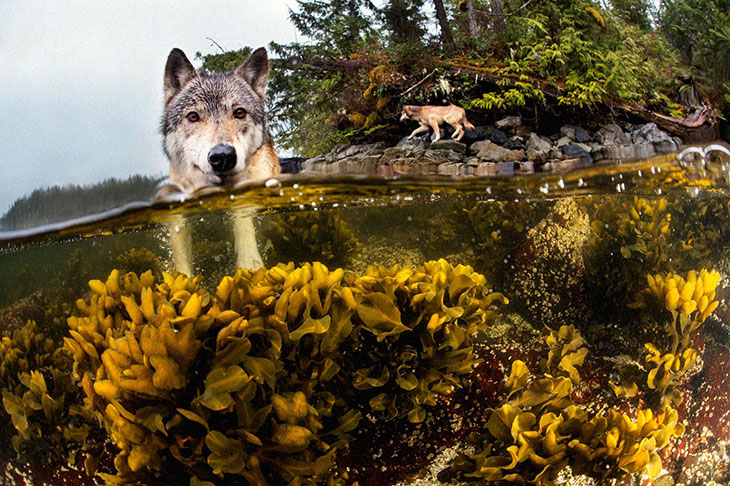
Award-winning photographer and Executive Director of pacificwild.org, Ian McAllister, along with Canadian wolf biologist Paul Paquet have been studying sea wolves since the early 2000s and have compiled significant facts on these amazing creatures in the last 20 years.
These marathon swimmers can cross miles of oceans between islands when they hunt. Sea wolves eat mostly salmon, but they can also hunt for seals and river otters and feast on barnacles, clams, herrings, and whale carcasses.
Paquet said that:
“There’s little doubt these wolves once lived along Washington State’s coast too. Humans wiped them out. They still live on islands in southeast Alaska, but they’re heavily persecuted there.”
Photographer Ian McAllister also explained that:
“We know from exhaustive DNA studies that these wolves are genetically distinct from their continental kin. They are behaviorally distinct, swimming from island to island and preying on sea animals. They are also morphologically distinct—they are smaller in size and physically different from their mainland counterparts.”
In order to capture these magnificent creatures in their natural habitat, McAllister swam to the wolves when they were headed his direction to get close enough to hear their grunts. He was able to capture several shots before heading back into deeper waters.
These extraordinary photos can be seen in the book The Sea Wolves, Living Wild in the Great Bear Rainforest, authored by Ian McAllister and Nicholas Read. The book talks about the importance of saving the Great Bear Rain forest, home to these unique creatures and many others.
What are your thoughts? Please comment below and share this news!
True Activist / Report a typo
